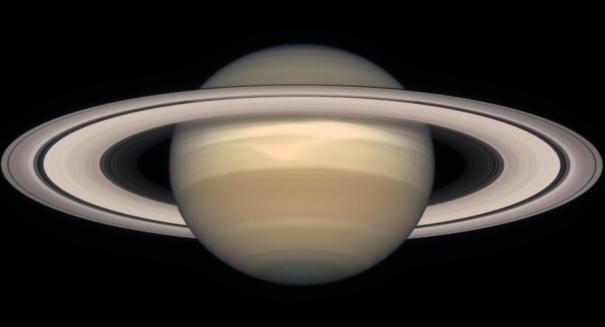
The researchers uncovered a negative correlation between the gravity and topography signals on Titan.
Researchers at the University of California-Santa Cruz scrutinized new data from NASA’s Cassini spacecraft on Saturn’s moon Titan and discovered unusual features of the moon’s outer ice shell. According to the researchers, the features are explained by the fact that Titan’s ice shell is rigid and that somewhat tiny topographic features on the surface are connected to gigantic roots reaching into the underlying ocean.
The researchers also uncovered a negative correlation between the gravity and topography signals on Titan.
“Normally, if you fly over a mountain, you expect to see an increase in gravity due to the extra mass of the mountain. On Titan, when you fly over a mountain the gravity gets lower. That’s a very odd observation,” said Francis Nimmo, a professor of Earth and planetary sciences at UC-Santa Cruz.
To account for that discovery, the researchers put together a model in which each feature in the topography on the surface of Titan is negated by a deeper “root” large enough to overpower the gravitational influence of the feature on the surface. In this model of Saturn’s largest moon, the roots reaching below the ice sheet are so much larger than the features on the surface that their buoyancy thrusts them up against the ice sheet.
“It’s like a big beach ball under the ice sheet pushing up on it, and the only way to keep it submerged is if the ice sheet is strong,” said lead author Douglas Hemingway, a doctoral candidate in planetary geophysics at UC-Santa Cruz. “If large roots are the reason for the negative correlation, it means that Titan’s ice shell must have a very thick rigid layer.”
According to the researchers, the model suggests that Titan’s icy shell would have to have a stiff layer at least 40 kilometers thick. They also discovered that hundreds of meters of surface erosion and sediment are needed to explain the perceived discrepancy between the big roots and small surface topography.
A thick stiff ice shell means it is very hard to create ice volcanoes, which some experts have suggested to rationalize certain features observed on the surface.
Though the researchers are still trying to figure out what could have created Titan’s topographic features with their deep roots, they note that Titan’s strange orbit around Saturn creates tides that flex that moon’s surface and cause tidal heating, which could give rise to the development of fluctuations in the thickness of the ice shell.
The study’s results are discussed at length in a recent issue of the journal Nature.
Leave a Reply